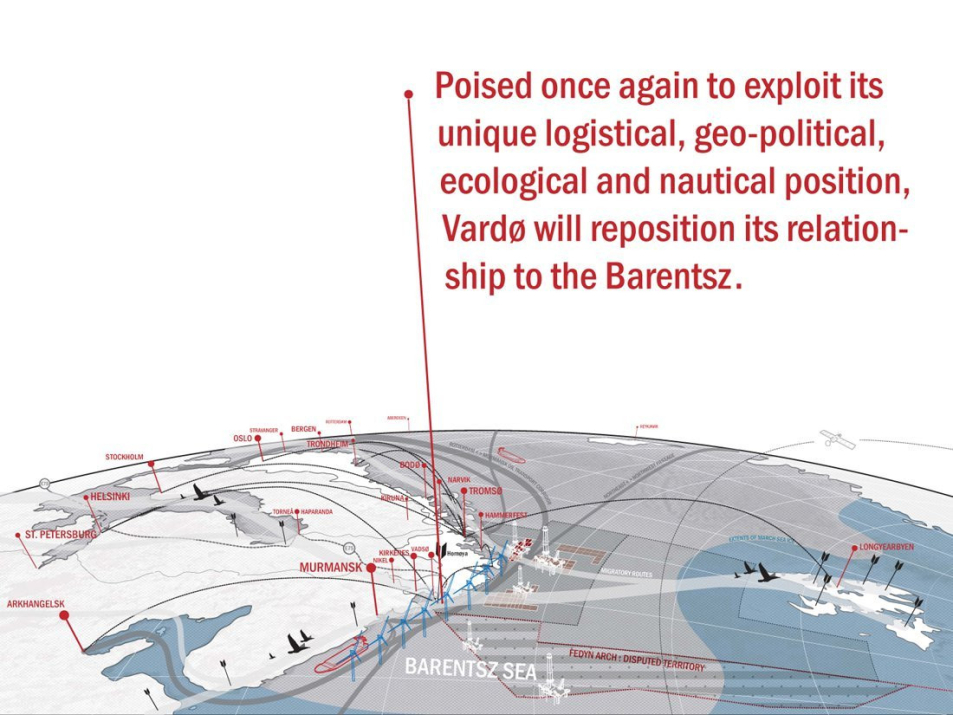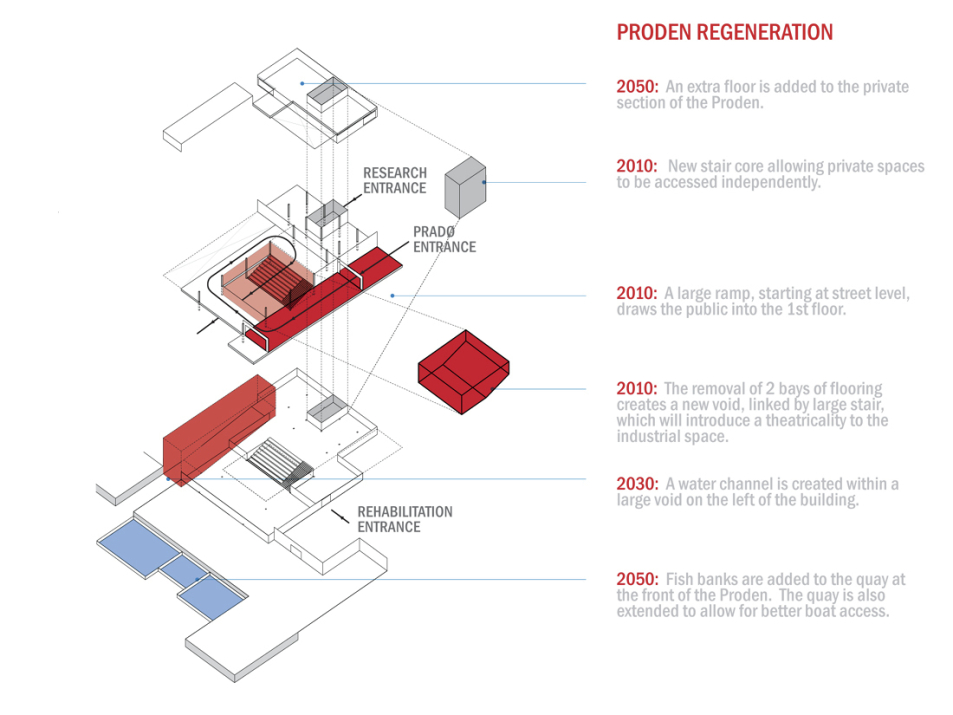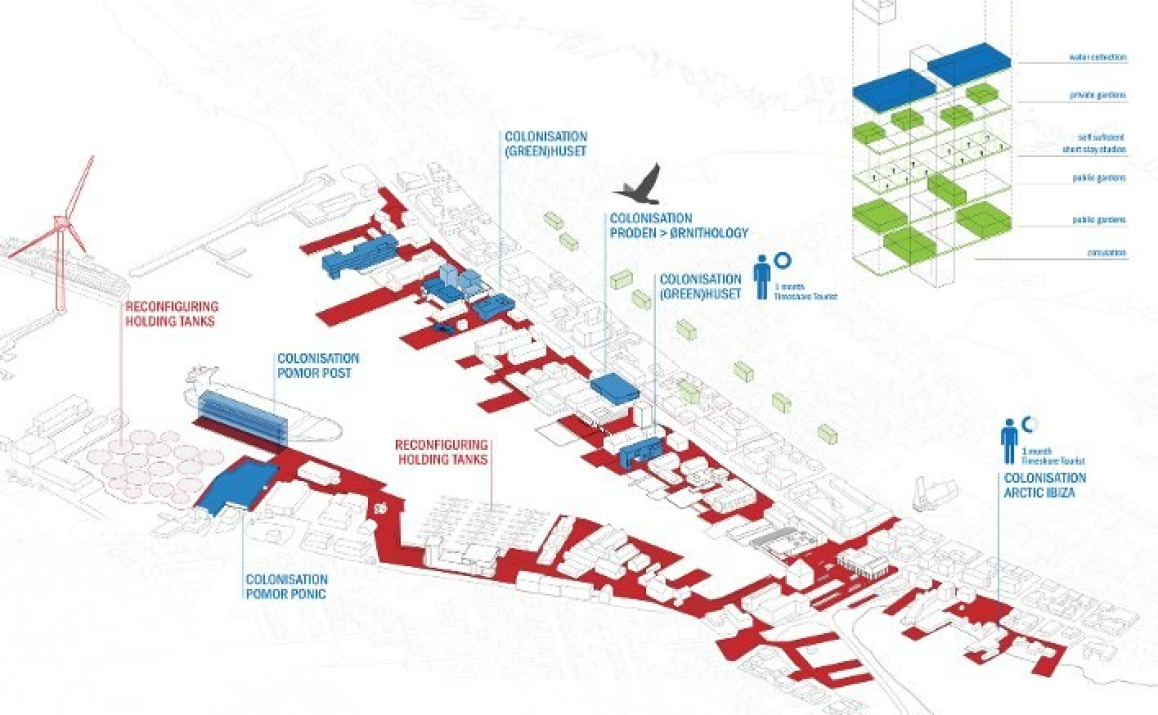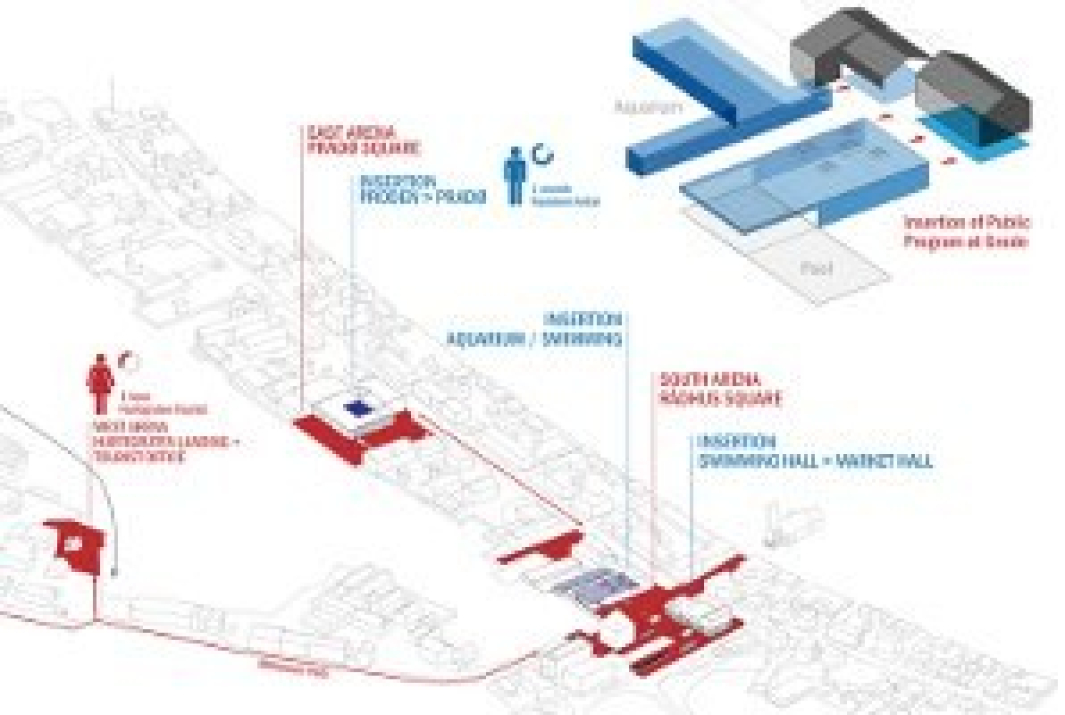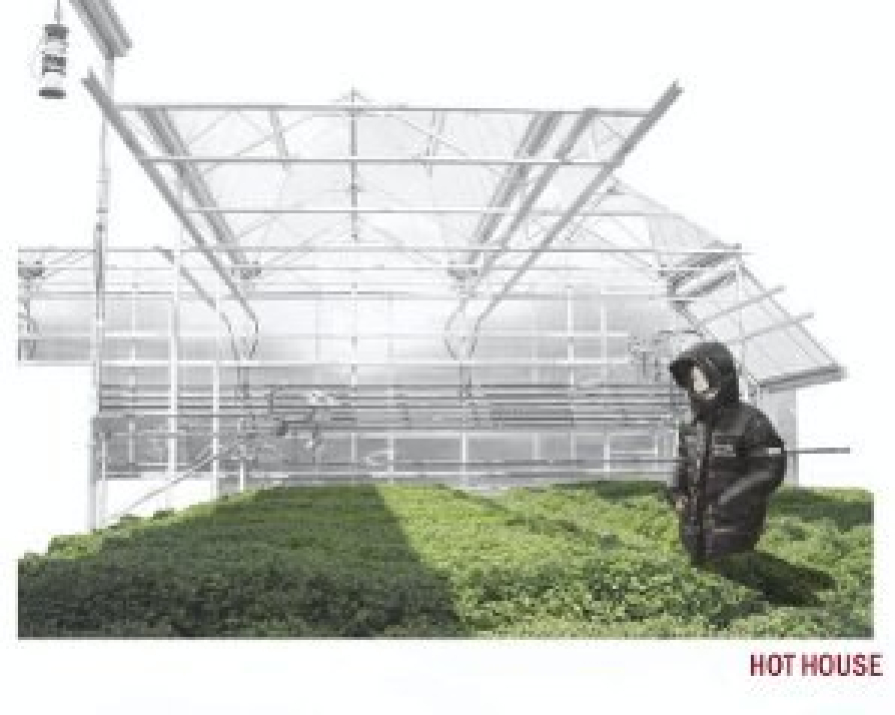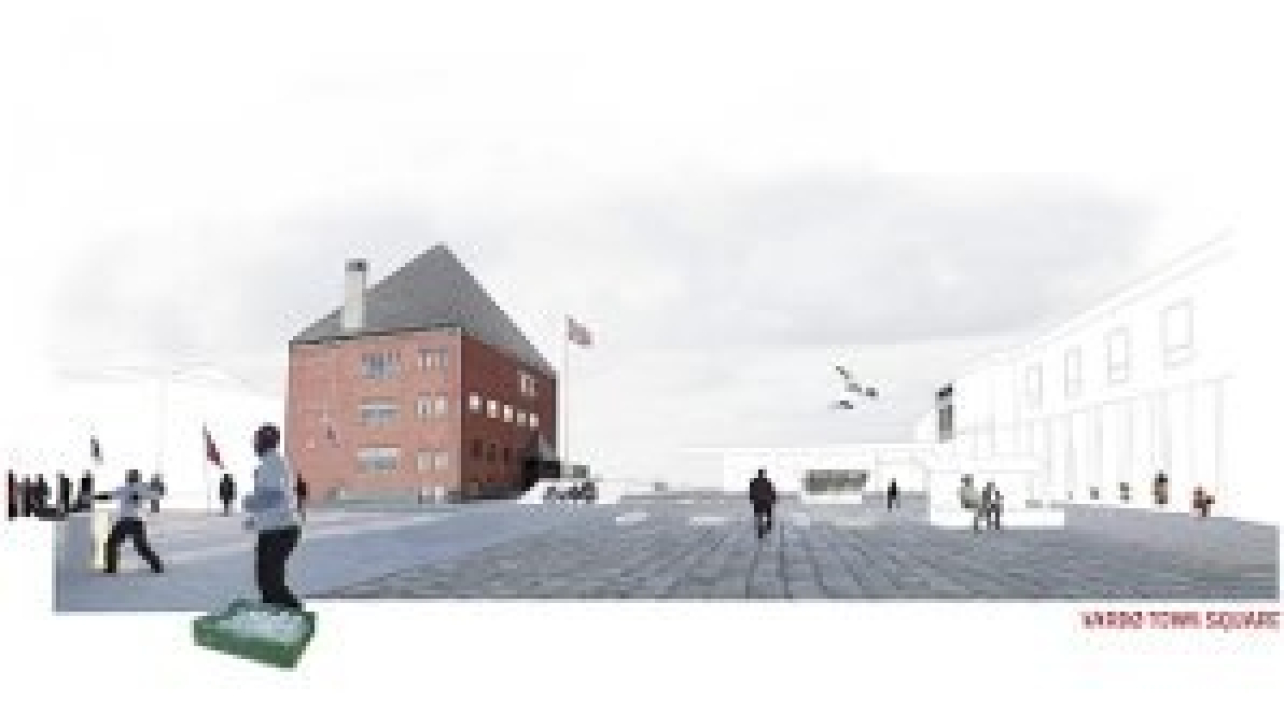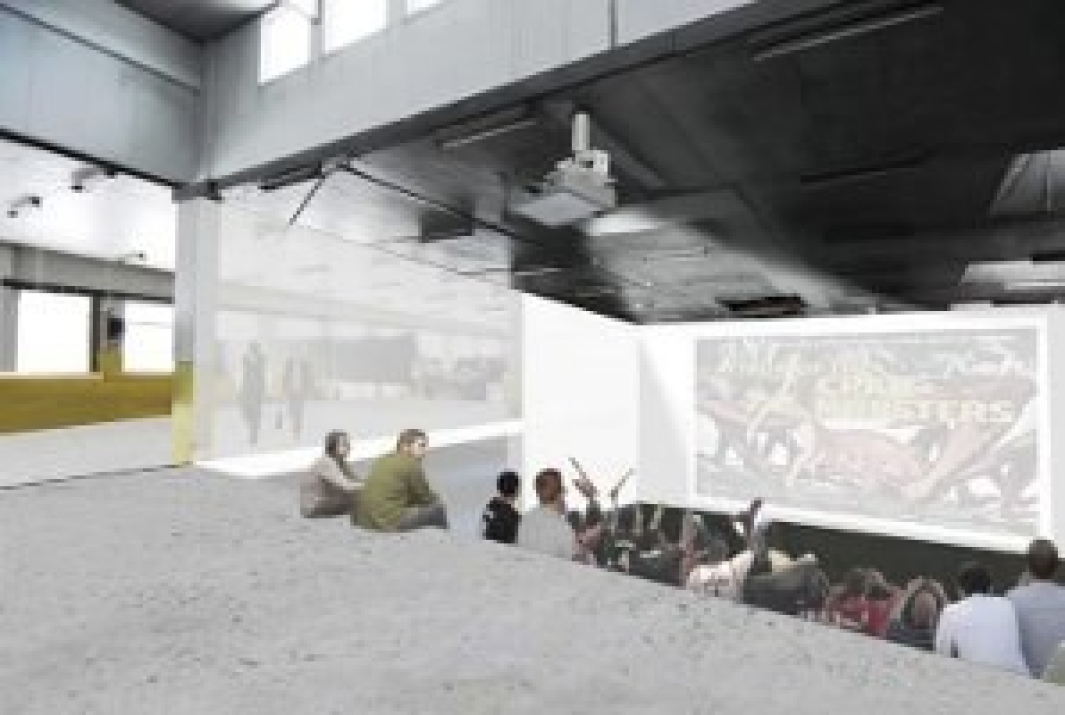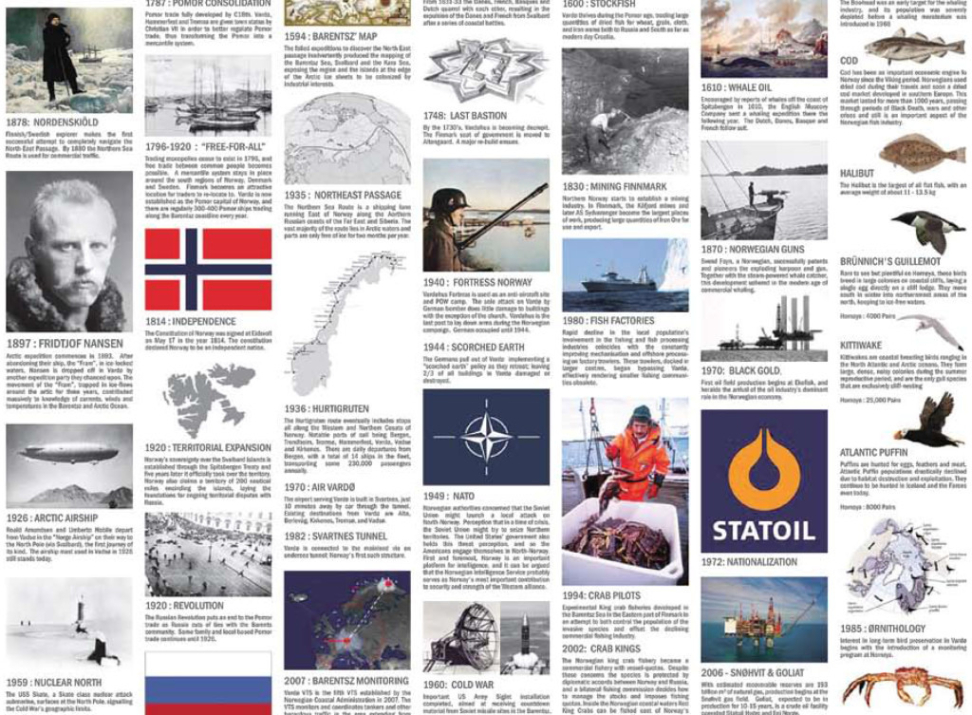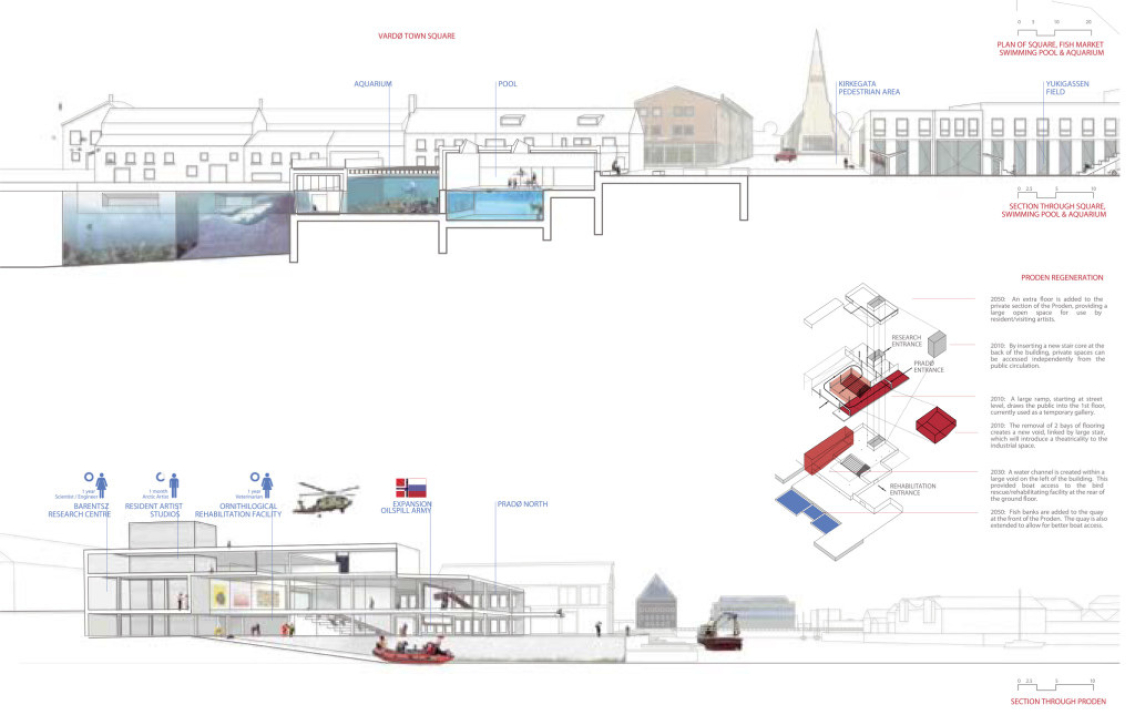Project:
Repositioning the remote
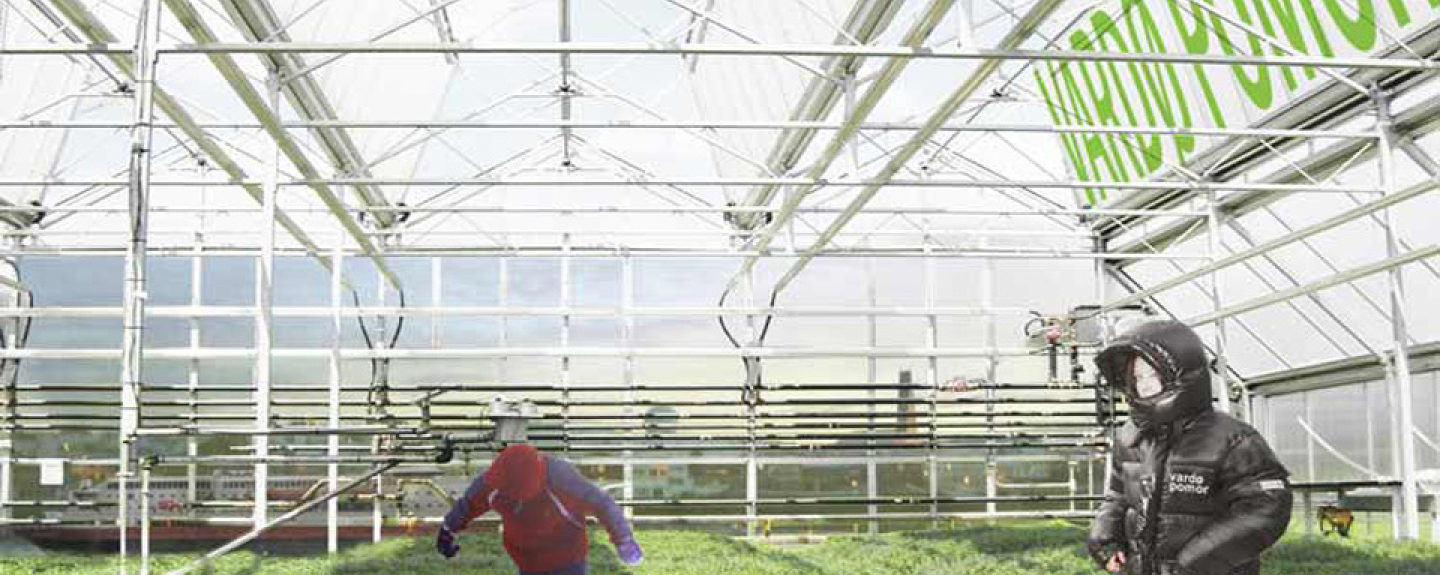
About
-
Vardø is intrinsically linked to the Barentsz Sea. The future of the Arctic waters will drive the development or decline of this isolated urban enclave. Historically an Arctic outpost of exploration, expansion, logistics, militarism and industry, Vardø’s relationship with the Sea has continuously evolved to suit changing economic and political paradigms. Geographically, Vardø’s unique location has constantly been reframed to adapt to these changes; the edge of the Viking expansion, the midpoint of Pomor trade, the end of Norway, a Cold War front, a surveillance centre and now the “Closest Point” to offshore oil production. As this frame shifts further north towards receding ice sheets, Arctic shipping lanes , offshore oil fields and ecological transformation, Vardø is poised to redefine its relationship to the Barentsz once more. Simultaneously at the end, edge and centre, Vardø will reposition itself to inform the future of the Barentsz Sea.
By analyzing Vardø’s horizons and establishing a set of development principles that will adapt themselves to a range of economic possibilities, the Vardø harbour can reposition itself to inform the future of the Barentsz Sea. Immediately, a set of cultural buildings and spaces inserted into the harbour front can serve to regenerate the civic life of the area and attract new users to the community. With the next era of Norwegian energy production set to exploit reserves proximate to Vardø, the harbour will act to service the industry while protecting the fragile ecology of the region. Beyond the oil horizon, Vardø must create new means of production, and utilise the harbour as the centre of a post-carbon economy. By revitalizing existing industrial structures with cultural program, regenerating the water’s edge through marine infrastructures and colonising interstitial spaces with new modes of ecological production, the Vardø habour will again become the centre of public and private life.
SITE STRATEGIES
2010: Cultural Indicators
Vardø’s immediate future relies on the regeneration of the community’s existing spatial and architectural framework to both support and promote a set of cultural programmes. Spatially, at the scale of the civic landscape, cultural arenas constructed along the harbour’s edge will begin to (re)generate a relationship with the Barents Sea. These public spaces, each defining a distinct set of uses, will serve as the seeds for110 future development of the harbour’s edge. Adjacent to these civic spaces are a set of cultural insertions, each operating upon or within the existing built fabric of Vardø, which will initiate and invite new users and programmes.
2030: Emerging Economies
Vardø’s near future will be formed by its advantageous geographic relationship to the warming industrial climate of the Barents Sea. The inherent conflict between offshore oil production and ecological preservation could yield a diverse set of economic and architectural opportunities that would convert oil revenues into a framework for a post-oil paradigm. Existing monitoring and service operations currently based in Vardø (VTS, Vardø Promor, oil spill response, etc...) will expand their operations, requiring associated harbour architectures. To protect and preserve the ecologies of the Barents, Vardø’s unique relationship to avian migratory routes and invasive aquatic species ideally positions it as an arctic outpost for ornithological studies and marine biology. Reconfiguring the harbour edge will accommodate the spatial requirements of these two programmes while simultaneously linking the cultural arenas. The expansion of further industrial and ecological programmes will re-use and revitalize remain- ing vacant harbour facilities.2050: Rising Levels
Vardø’s distant future hinges on a set of levels: oil & energy production, rising seas & temperatures, aquaculture & hothouse production, and ultimately its level of self-sufficiency given its peripheral geography. Norway’s post-oil economy will need to establish alternate, localised and diversified modes of production to maintain the quality of remote urban life afforded through oil production and transport. Energy, generated from the powerful offshore arctic winds, will sustain local requirements with surplus being distributed south into the European grid. To accommodate a rising sea, Vardø’s harbour will be reconfigured to expand frontages, encouraging new modes of production to take hold. Food, the commodity most dependant on an oil economy, will again become a key player in the ongoing socio-economic transformation of the Barents region. By colonising the interstitial and reconfigured lands of the harbour with architectures of ecological production, Vardø’s role as a producer will be redefined; twenty-four hour sunlit, greenhouse produced arctic char and stock-king crab will be traded (inter)nationally via a resurgent Pomor trade. -
Repositioning the Remote, the first prize winner for Vardø, demonstrates not only a deep knowledge of the history, geography and assets of the site, but also a desire to strengthen and build upon the existing structures and dynamics of the area. The strategy proposed is articulated around short-, mid- and long-term objectives which embrace the cultural, industrial and ecological facets of Vardø.
First, cultural spaces would take the place of abandoned industrial structures, providing a boost to the local community and attracting interest from outside the area. The winning team forecasts that by 2030, Vardø will play an important role in Norwegian energy production by monitoring, exploiting and servicing nearby oil reserves. Concurrently, Vardø will consolidate its unique position as an outpost of ornithology and marine biology in the Arctic, protecting the fragile ecology of the Barents region.
In the distant future, Vardø will have to face pressing challenges which range from finding a place in Norway’s post-oil economy, meeting the effects of global warming and raising aquacultural and hothouse production to a higher level of self-sufficiency. Repositioning the Remote suggests that Vardø take advantage of its powerful offshore Arctic winds to create energy for local needs, while distributing the surplus to the southern regions. Vardø’s harbour will be reconfigured to face the rising level of the sea, encouraging new modes of production in the process. In the meantime, the interstitial and reconfigured harbour area would be welcoming a 24-hour sunlit greenhouse to produce Arctic char and stock king crab for trade abroad.
-
Ana Reis Ross Langdon
a.creis@gmail.com
26 Ainsworth Road, London E9 7LP
+44 78 70 49 17 02Ross Langdon
rosslangdon@hotmail.com
15 Hyperion House, Brixton Hill, London SW2 1HY
+44 78 33 77 01 09Kelly Doranknelsond@gmail.com
317 Adelaide Street West, 2nd Floor, Toronto, Ontario, Canada, M5V 1P9
1 64 72 37 86 41Louis Halllouishall@gmail.com
The Garden Flat, 51a Blomfield Road, London W9 2PD
+44 77 74 46 62 44
Related projects
-

Repositioning the remote
Vardø is intrinsically linked to the Barents Sea. The future of the Arctic waters will drive either…
-
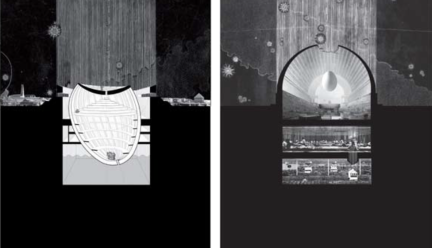
The white
Could we imagine an economically sustainable future for Vardø other than a touristic resort,…
-
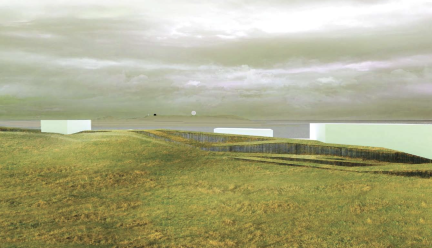
Datarock
Tomorrow’s city is not an impenetrable partitioning of activities, inherited from functional…
